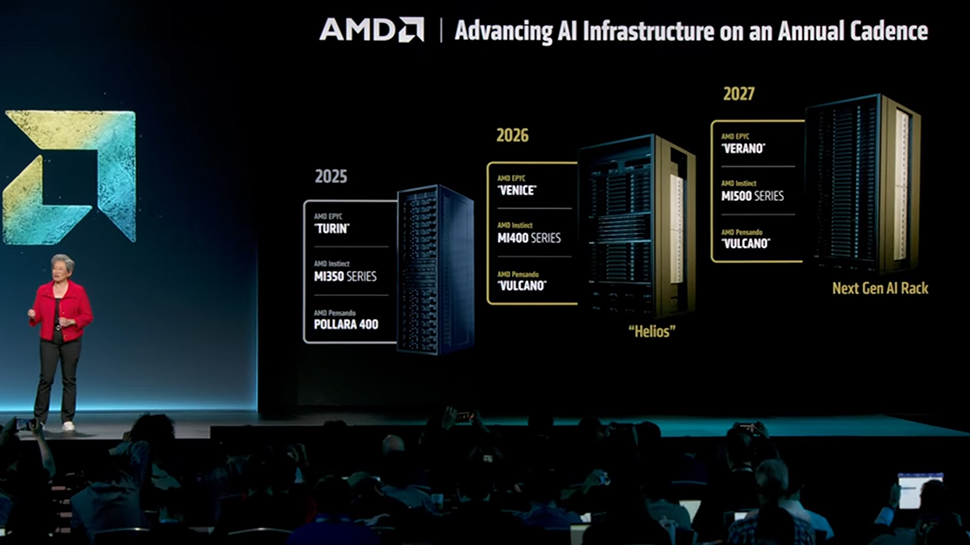- Venice CPU doubles bandwidth with up to 256 Zen 6 cores
- 2027 AI rack expected to deliver 144 GPUs with Verano chips
- AMD plans Verano and MI500 rollout with 36-rack infrastructure
At its recent Advancing AI event, AMD revealed some of the first technical details about its next-generation Zen 6-based processor, code-named “Venice.”
Built on a 2nm process and packing up to 256 Zen 6 cores – a 33% increase from the current generation EPYC ‘Turin’ processor – AMD is seeking to raise the bar for AI-optimized compute power.
It is expected to more than double memory bandwidth compared to current EPYC CPUs, hitting 1.6TB/s per socket. Venice also supports PCIe Gen6, offering faster communication between CPUs and GPUs.
Pushing the envelope
“Venice extends our leadership across every dimension that matters in the data center,” said Lisa Su, AMD CEO. “More performance, better efficiency, and outstanding total cost of ownership.”
“It delivers 70% more compute performance than our current generation leadership Turin CPUs,” she added. “And to really keep feeding MI400 with data at full speed, at even at rack scale, we have doubled both the GPU and the memory bandwidth and optimized Venice to run at higher speeds. Now we just got Venice back in the labs and it is looking fantastic.”
While Venice headlines AMD’s 2026 platform, Su also gave us a glimpse at what the chip giant is working on for 2027.
“We are already deep in the development of our 2027 rack that will push the envelope even further on performance, efficiency and scalability with our next generation Verano CPUs and Instinct MI500-series GPUs, so lots and lots of stuff to come from AMD,” she revealed.
This new system builds on the “Helios” rack shown for 2026, which houses 72 MI400 GPUs across 18 racks. For 2027, AMD is planning an even more expansive setup with 36 racks.
Assuming a similar configuration, the next-gen AI rack could contain 144 GPUs. The Verano platform is expected to maintain the high bandwidth and performance efficiency established by Venice, likely with more memory and compute per rack.
AMD has not officially named its 2027 rack, but we hear it’s being informally referred to in industry circles as a larger-scale continuation of Helios.
Via Tom’s Hardware
